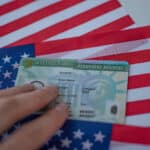Contents
An individual can apply for the E1 and E2 visa interchangeably, which means that in certain situations a foreign national may be able to qualify for both visas. This allows individuals to start by holding an E2 initially and subsequently apply and hold an E1 visa or vice versa, he or she can start with an E1 visa and later apply for an E2 visa.
Both the E1 and the E2 visas are based on the existence of a treaty of commerce and navigation between the United States and another country. This promotes bilateral trade and investments, allowing individuals to engage in business and trade in the United States. To qualify, an applicant must be a national of a treaty country.
E1 and E2 visas are both temporary and can be renewed indefinitely as long as their respective legal requirements are met and do not lead to a US green card. Both visas are processed at the United States Consulate or Embassy and have the same validity period. Lastly, both E1 and E2 visas provide the ability to bring certain executives, managers and other specialized employees to the US as long as they have the same citizenship as the business owner.
What are the differences between the E1 and E2 visa for the United States?
Now that we’ve determined the similarities, let’s discuss the differences. The most notable difference is only citizens of certain countries can qualify for the E1 visa. Some countries have an E1 treaty or an E2 treaty with the United States but not both. Which means an individual from one of these countries will not have an E2 available to them and can only apply for an E1 visa.
For example, Greece only has an E1 treaty with the United States and does not have an E2 treaty, therefore if you are a citizen of Greece you can only apply for an E1 visa. However, if you are a citizen of Japan you can apply for both the E1 and E2 visa because Japan has both an E1 and E2 treaty with the U.S.
What does an E1 Visa Cover and who qualifies?
- For the purpose of carrying out international trade an E1 visa allows people or employees of a company to enter the United States. Although, there is no set limit to the amount of trade that must occur, there is an emphasis on the number of transactions placed rather than the overall value.
- In order to qualify for an E1 Visa an individual must be a national of a U.S. State Department treaty trader country. He or she must engage in substantial trade continuously, involving numerous transactions over time. As well as be employed at a certain level (such as executive or specialist) by a company operating on an E1 visa. Individuals must also be able to provide evidence of returning to their home country at the conclusion of the visa period.
- When determining if an E1 visa is the right choice it’s important to ask the question if you’ll be remaining in the country for an extended period of time. Initially the E1 visa allows individuals to stay up to 2 years, with unlimited extensions for the same time period. Who does the E1 Cover? E1 visas cover immediate family, meaning legal spouse and unmarried children 21 years and younger.
What does a E2 Visa Cover and who qualifies?
Unlike the E1, the E2 visa promotes trade and investments between countries in a different way. Also known as the “Treaty Investor Visa” the E2 visa is available to citizens or nationals of over 30 countries that have trade treaties with the United States.
An E2 visa enables people who have a substantial amount of capital to invest in order to come to the United States to set up a business or practice. Although the E2 visa does not provide residency like a Green Card, it can be extended indefinitely for as long as the holder’s business is viable.
In order to qualify for a E2 visa, the investor must demonstrate that the only reason for entering the United States is to run or develop a business. In order to meet this requirement an investor must have a minimum of 50% stake in the business or a significant managerial position which gives the investor operational control of the company. In addition, the investment must have a good chance of generating a sufficient income to provide for the visa holder and their family. Also, the business must be genuine and bona-fide having a dedicated premise. Meaning a home address does nor suffice.
E1 vs E2 Visa Costs
The E1 and E2 differ in cost only when you consider the investment amount for the E2 visa. An E1 visa does not require an up-front investment, making it ultimately the cheaper visa. However, the filing fee to process both the E1 and E2 visa are the same. To apply for either visa it is required that you file an I-129 form. In addition to the $460 filing fee, if you are outside the U.S you will also need to submit and file a DS-160 which has a filing fee of $160.
Which Visa is best? E1 or E2?
Choosing the correct visa is often the first step to any successful immigration journey. However, working towards obtaining an E1 or E2 visa is a very time -consuming process which brings great opportunities. Although the differences between the two are subtle, choosing the right visa can be confusing. Mistakenly applying for the wrong visa can result in a significant amount of time and money wasted, therefore it is very important to select the right visa to prevent refusal.
Speaking with qualified immigration attorneys, such as the experts at MC Law Group, can assist with evaluating both the E1 and E2 visas and guide you through the process to determine which option is best for you and your circumstances. Call (702) 258-1093 to schedule a consultation today.






